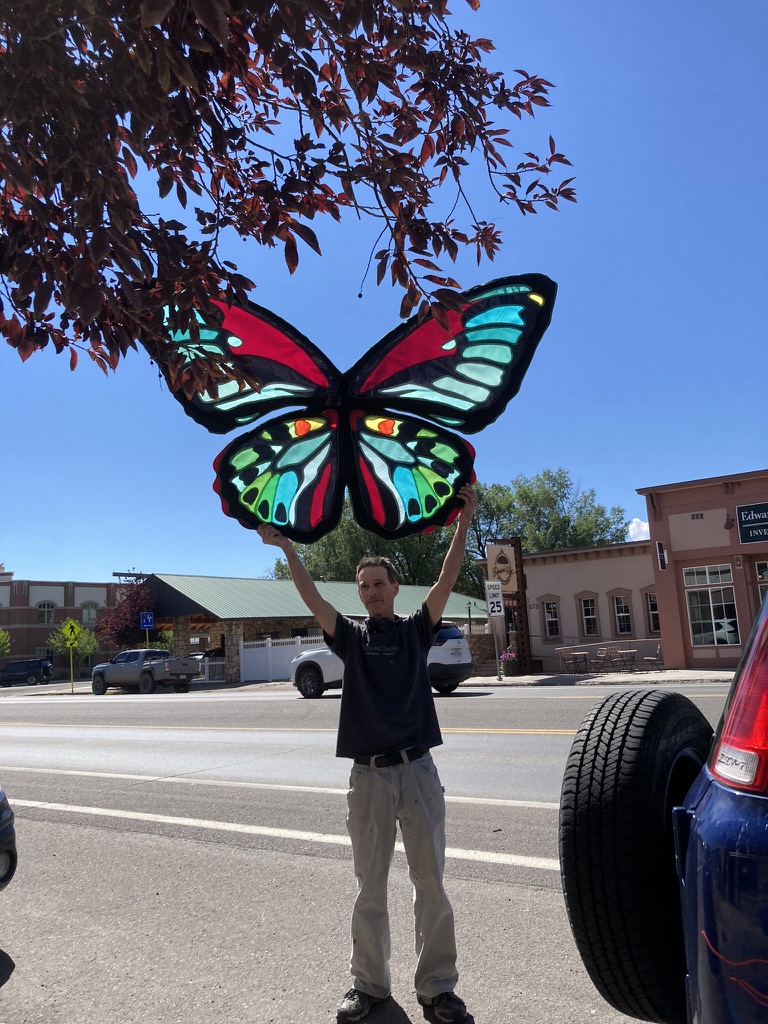What is Banner Art?
Banners are an ancient form of art. Using fabric and stitching, artists created beautiful banner art, standards made of cloth which bear a symbol, logo, image or message for the purpose of display in public places to represent human aspirations and group allegiance.
Banner Art beginningsÂ
A flag and banner designer is called a vexillographer. The latin word vexillum or velum, means a sail. According to Wikipedia, “this is confirmed by the historical evidence (from coins and sculpture) that vexilla were literally “little sails” i.e. flag-like standards.†Sailboats use these little sails for communication presently.
In the vexillum (banner) the cloth was draped from a horizontal crossbar suspended from the staff; this is unlike flags where the ‘hoist’ of the banner is attached on one side. One type of flag is a heraldic banner, usually square or rectangular and whose design is traditionally the shield in a coat of arms.

The University of Chicago Logo draws from the traditional depiction of a coat of arms which is a heraldic banner gonfalon shape.
Let’s talk about gonfalon banner art.Â
The gonfalon is a heraldic flag or banner which has streamers, or pointed shapes on the bottom edge. This style suspends from a crossbar in an identical manner to the ancient Roman flags. A gonfalon can include a badge or coat of arms, a logo or symbol, or simply be representational decoration. First adopted by Italian Medieval Towns and local guilds, today Italian municipalities have a gonfalon display of its coat of arms.
The gonfalon shape for fabric banner art is the preferred shaped for ecclesiastical ceremonies and processions.Â
The first photo is of a banner of ‘Our Lady.’ She is Mother Mary. The banner tapestry is a processional banner in the gonfalon style. The banner tapestry is “made from blue and dark mauve brocaded silk damask, embroidered with rich silks depicting a wreath of red and white roses around the Virgin Mary with the Christ Child. Flanking them are St Peter, patron saint of the Abbey, and St Edward the Confessor, holding up his ring.”
The banner was presented on 4th November 1922 by the Girls’ Friendly Society, and was designed by J Ninian Comper.

University of Chicago Logo 2001, Mettje Swift drew from ancient symbols of Christianity used by the Catholic Church to create a 3-D hanging sculpture, two long streamers falling from four positions and swathed across at the bottom. Â

The second photo is of “Our Lady†a church banner tapestry in the gonfalon style. Both traditional and modern representations hang from the top by a cross bar and can be hung from ceilings in open spaces. Fabricated in 2012 by Banner Art Production Studio and designed by Mettje Swift. It is made of a modern cloth which is a translucent woven nylon.

Banner Tapestry is found in use historically to hang on the walls like tapestry and for insulation on cold walls and to hang from the ceilings, all to help warm up the space and make it human.Â
Why am I passionate about Banner Art?
I love color and motion. I love pageantry, processions and displays of allegiance. I love drama and changing atmospheres. Flags have the power to create loyalty.
I naturally took to flying flags, I was smitten, actually, and made a career of finding new ways to install banner art.Â
Flags are kinetic sculpture in partnership with the wind. Take time out some day and watch a flag fly. You will be watching the wind blow. I wanted to bring that dynamic inside. The feeling of wind and color brought inside, refreshes architectural spaces.Â
I use fabric, cut from a pattern, pieced and sewn on machines. Each banner incorporates the heart and aspirations of those whom it represents. I want to bring honor and respect to the art form by using banners in a contemporary and modern way.
In today’s world, if you look up banners on the web, you will find many sites that print ugly vinyl signs and or cheap graphic design for media. Though both may share similar intent, these are not banners.Â
I follow in the footsteps of other vexillographers, those who taught me. used to be other artists who used this assemblage technique to make the banners double sided and light translucent. My direct training came through Janet Seibert who learned from Anders Holmquist. Anders Holmquist completed an incredible display of light pole banners in 1984 for the Olympics in California. Janet Seibert created entire installations of banners and flags, as well as suspended art banners for the Denver Center for the Performing Arts and the Sixteenth Street Mall Transit Station in Denver where the panels of banner art were insulated to dampen echos.
From boat sails to large scale atrium installations of hanging art, the essential element of the art form is to represent human aspiration.
